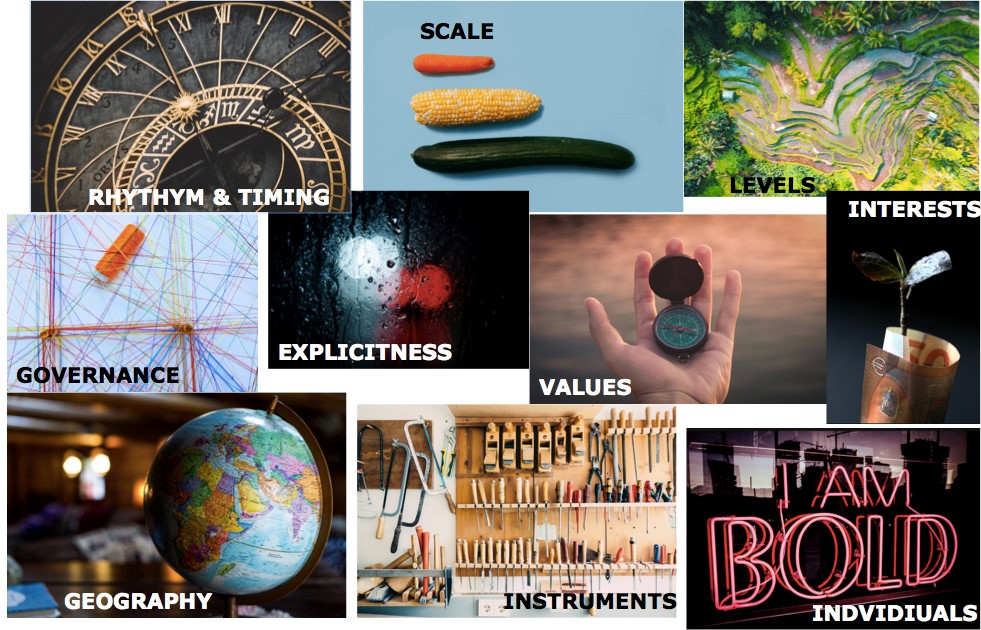7.1.3 Transversal Analysis of S4D4C Case Studies
A comparative study of the nine case studies of the S4D4C project revealed 10 transversal aspects that help us to make sense of the complex, multi-level, multi-actor, multi-faceted concept of science diplomacy. These transversal aspects we have labeled ‘matters’ in our report because they both comprise the substance of science diplomacy, and they matter, in the sense that they are consequential for both practically and conceptually understanding science diplomacy.

- Explicitness/Implicitness – The label ‘science diplomacy’ can be applied to people, practices, and phenomena. The act of labeling something (or choosing not to label it) is political, that is, it serves to advance foreign policy objectives and to legitimize people and their activities. In our cases we have found a great deal of science diplomacy which happens without being labeled, this we refer to as implicit science diplomacy. Sometimes implicit science diplomacy is intentional, but often it is a result of a lack of awareness of the term. Either way, it is important that we don’t limit our thinking about science diplomacy only to things that bear its label.
- Interests – Interests have become increasingly part of the science diplomacy discourse, particularly with the pragmatic approach discussed in Module 2. However, we need to be aware that interests are almost never unitary or unified. Instead we find that there is a complex array of competing and cooperating interests of different types (political, scientific, economic, and personal) that operate on different levels and scales. In all these types, we find that tensions between competition and cooperation create an ‘interest paradox’. A task of the successful science diplomat is to uncover and understand the complete set of interests that impact on any given situation.
- Values – Science diplomacy efforts are influenced by two distinct sets of values, political-social values and scientific values. The former often provide the grand objectives for science diplomacy initiatives, but the later (which includes universalism, communality, disinterestedness, organized skepticism, responsibleness, precautionary, openness, truth) can form the basis of cooperation with countries that may not share political values. Different types of science diplomacy, as identified by the Royal Society/AAAS, engage with different sets of values in distinct ways.
- Scale – Science diplomacy depends on a variety of scale framings: spatial, administrative, and epistemic. Spatial scale corresponds to geography, administrative scale to the governance levels and administrative structures available on them, and epistemic scale refers to the range of disciplines and scientist networks that are engaged, both nationally, regionally, and globally. In all three scales we find a-symmetries between regions, particularly between the global north and south, that need to be taken into consideration and addressed.
- Levels – Levels matter for science diplomacy because they are key in structuring our understanding of how different actors and stakeholders can and do jointly respond to global challenges. We find four essential levels on which science diplomacy should be considered: global, sub-global, national, and sub-national, but note that science diplomacy processes pervade all levels. What is interesting is the connections between levels and how the need for a mixed-level or multi-level approach is and can be met.
- Individuals – Science diplomacy is often characterized by institutions, interfaces, collective actors and communities; however, individuals matter profoundly for science diplomacy as creative and responsible actors within their respective professional realms. Many of the cases show how individual leadership and determination were critical for achieving science diplomacy results.
- Geography – When we think about geography in relation to science diplomacy, we need to think not only about physical geography, but also human geography – travel and migration patterns and the way in which history and culture affect science diplomacy’s efforts and create cultural regions. Geography of both types shapes national needs and fosters scientific and technical expertise, and institutional and industrial development, which may be exploited as national soft-power assets. Geography is also important for science diplomacy in term of the interdependence and the perception of shared challenges within regions.
- Governance systems – Governance systems are unique in their networked configuration of actors, stakeholders, processes, instruments, and institutions. We can better understand them by looking at three types of nodality (being in the middle of the network): nodality of science – how central science is vis-à-vis diplomacy, nodality of level – which levels (see matter above) are most central, and finally how the nodes cluster to create core and peripheral element of the governance system. Nodality in the science diplomacy system provides opportunities to exert leadership and shape agendas.
- Instruments – An examination of the instruments used in science diplomacy practices provides insight into why bottlenecks in foreign policymaking occur. Science diplomacy efforts, especially for global challenges, requires multiple and mixed instrument approaches, bringing in strategic, operational and support instruments. When there are gaps in the mix or when instruments conflict or create frictions, we find suboptimal outcomes.
- Rhythm and timing – Politics and science both have ‘normal rhythms’ or sequences of action that regularly occur, such as election cycles in politics, and publication and peer review cycles in science. Science diplomacy can get caught between and betwixt those rhythms, which do not correspond to its needs and objectives. Timing, on the other hand, is intentional, and we find that its strategic use is crucial for interrupting and/or aligning these rhythms in order to moderate and synchronize their future course in the process of addressing global challenges.
What the experts think
Learn from our case study work package leader, who shares some common conclusions from these empirical case studies.

Mitchell Young
Assistant Professor, Department of European Studies, Charles University in Prague
What matters in science diplomacy?
What were your main findings in all case studies? Did you find any commonalities?
Can you be more specific with what you studied in these cases?